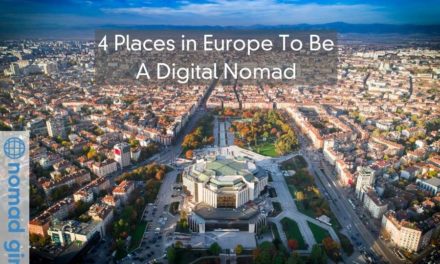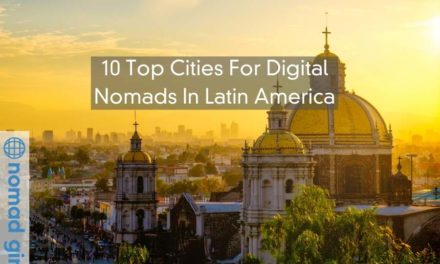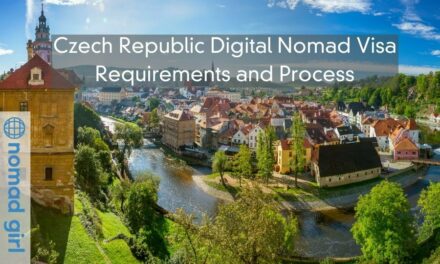The digital nomad lifestyle, a term once foreign and now increasingly familiar, represents a paradigm shift in how we approach work and life. Embracing the ability to work remotely, digital nomads blend travel, lifestyle, and productivity in diverse ways. Let’s delve into the five distinctive types of digital nomad lifestyles, each embodying unique traits and preferences.
1. The Home Base Nomad – Stability Meets Flexibility

Enjoy the comforts of your own home and home office.
The home base nomad epitomizes a harmonious blend of stability and adventure, offering a unique approach to the digital nomad lifestyle. This group prioritizes having a primary residence where they spend a significant portion of the year, usually six months or more. This approach cultivates a sense of normalcy and allows for the nurturing of deep, lasting connections with friends and family. Unlike other nomadic styles, the home base nomad enjoys the comforts and familiarity of a permanent home, which can be a sanctuary for relaxation and personal hobbies.
One of the key advantages of this lifestyle is the ability to maintain stable, long-term relationships and a strong community connection. It offers a balanced environment for those who value the reassurance of a steady home while still craving periodic adventures. Additionally, having a fixed address can simplify logistical aspects such as receiving mail, managing finances, and accessing healthcare, which can be more challenging for constantly moving nomads.
On the work front, these nomads typically enjoy flexible arrangements with their employers. They can seamlessly alternate between working from their home base and remote locations, allowing them to meet professional obligations while exploring new destinations. This flexibility ensures a sustainable income and career growth, paralleled with enriching travel experiences.
However, this lifestyle also comes with its challenges. The dual commitment to a home base and travel can lead to increased expenses, as they have to manage the costs of maintaining a permanent home and funding travel. Additionally, the constant transitions between home and travel can sometimes disrupt work routines and productivity, requiring a well-honed skill in time management and adaptability.
In conclusion, the home-based nomad lifestyle offers a compelling mix of stability and flexibility, making it an attractive option for those seeking the benefits of a digital nomad lifestyle without completely giving up the comforts and security of a permanent home. While it necessitates a delicate balance between the responsibilities of a fixed residence and the unpredictability of travel, it stands as a testament to the diverse and customizable nature of modern work and life.
2. VAN Life or Boat Life Nomads – Freedom on the Move

Work from the comforts of your own VAN.
VAN and boat life nomads epitomize a lifestyle of unparalleled freedom and mobility. By transforming a van or boat into a mobile home, they embrace the ultimate form of location independence, living and working wherever they choose to park or dock. This lifestyle appeals to those who yearn for constant change and the ability to chase favourable weather, picturesque landscapes, and new adventures at their own pace.
One of the most significant advantages of this nomadic lifestyle is the profound sense of freedom it offers. These nomads have the unique opportunity to wake up to different sceneries as often as they wish, from secluded beaches to bustling cityscapes, all while maintaining their livelihood. This constant change of environment can be a source of inspiration and creativity, particularly for those in creative fields. Additionally, VAN and boat life encourage a minimalist lifestyle, often leading to a more sustainable and environmentally conscious way of living.
However, the challenges of this lifestyle are as real as its freedoms. Limited space is a significant constraint, requiring nomads to be highly organized and adaptable. Living in a confined space can also be physically and mentally taxing over time, lacking the amenities and comforts of a traditional home. Furthermore, maintaining a reliable internet connection for remote work can be a continual struggle, especially in remote areas or while on the move.
Many who have chosen this lifestyle find boat hardware here and always ensure their vehicle is in top condition for long journeys. This proactive approach ensures safety and efficiency, allowing them to focus on the adventures ahead.
Vehicle or boat maintenance is another critical aspect of this lifestyle. Breakdowns and repairs are costly and can significantly disrupt travel plans and work schedules. There’s also the constant need to consider practicalities like parking, legal camping spots, and docking fees, which require thorough planning and can add up financially.
In conclusion, VAN and boat life nomads enjoy a life of incredible freedom and constant adventure. This lifestyle suits those who are resourceful, adaptable, and comfortable with minimalistic living. While it offers an escape from the conventional, it also demands a high level of self-sufficiency and a tolerance for uncertainty and discomfort. VAN and boat life can provide an enriching, life-changing experience for those willing to embrace these challenges. VAN and boat life can provide an enriching, life-changing experience.
3. The Base-to-Base Nomad – Comfort in Familiarity

Tracey Johnson owner of Nomad Girl loves her two bases in Italy and Thailand.
Base-to-base nomads represent a unique segment within the digital nomad community, characterized by their preference for familiarity and comfort. Unlike other nomads who might constantly seek new destinations, base-to-base nomads establish two or more home bases that they regularly travel between. These bases are often in different countries or regions, selected for various reasons like favourable weather, appealing scenery, cultural affinity, or even tax benefits. This lifestyle allows them to experience the thrill of travel and the comfort of familiar settings.
A significant advantage of this approach is the psychological comfort and reduced stress associated with familiar environments. Base-to-base nomads can personalize each home to suit their preferences, ensuring a sense of belonging and ease wherever they are. This familiarity can lead to increased productivity, as they spend less time acclimating to new surroundings. Additionally, having multiple bases in different locations allows for a diverse cultural experience and the opportunity to establish a network of friends and contacts in various parts of the world.
My Two Digital Nomad Lifestyles – A Journey Between Thailand and Italy
However, this lifestyle also presents some challenges. The most notable is the financial cost of maintaining multiple residences. Managing and maintaining several homes can be expensive and logistically complex, especially when it comes to handling bills, repairs, and general upkeep from afar. Furthermore, this lifestyle requires careful planning and coordination, particularly in managing travel schedules and ensuring that each home is secure during absences.
Another potential disadvantage is the risk of feeling fragmented. While having multiple bases offers variety, it can also lead to a sense of disconnection, as one might not feel entirely rooted in any single place. This can impact the depth of local community engagement and may lead to a sense of transience despite the familiar settings.
In summary, the base-to-base nomad lifestyle offers an appealing blend of travel, comfort, and familiarity. It suits those who desire the excitement of a nomadic lifestyle but prefer the stability and comfort of returning to known environments. While it does come with financial and logistical challenges and the potential for feeling less connected to a single community, it offers a unique way to experience the world while maintaining a sense of home.
4. The Fast Travelling Digital Nomad – Adventure at the Forefront

Travel vlogger in Krakow Poland
The fast-travelling digital nomad lives a life characterised by constant movement and exploration. Driven by a thirst for adventure, these individuals prioritise travel, often moving from one destination to another in quick succession. Their lifestyle is ideal for those who seek to experience as much of the world as possible, like travel bloggers, vloggers, and freelance videographers, whose work thrives on new and varied experiences.
One of the primary advantages of this lifestyle is the sheer diversity of experiences and cultures one encounters. Fast travellers are often exposed to an array of environments, cuisines, languages, and customs, enriching their personal and professional perspectives. This constant change can be a wellspring of inspiration and creativity, particularly for content creators who need fresh and engaging material. The flexibility to choose destinations also allows these nomads to follow favourable weather, attend global events, or explore off-the-beaten-path locations, further enhancing their adventure.
However, the fast-paced nature of this lifestyle comes with significant challenges. The frequent movement can lead to travel fatigue, where the continuous process of adjusting to new environments becomes exhausting. This can impact mental and physical health, with stress and burnout being common pitfalls. Moreover, constantly changing locations can disrupt work routines, making it difficult to maintain productivity and meet professional deadlines.
Another downside is the lack of deep connections with people and places. Fast travellers might find it challenging to form lasting relationships due to their transient nature. Additionally, the costs associated with frequent travel—such as transportation, accommodation, and visas—can add up, making this lifestyle financially demanding.
While the fast travelling digital nomad lifestyle offers an exhilarating array of experiences and the freedom to explore the world, it requires careful management of health, work-life balance, and finances. It’s a lifestyle that suits those who can adapt quickly and are willing to embrace the challenges that come with constant movement. For those who can navigate these challenges, the rewards are a life filled with diverse experiences and unparalleled freedom.
5. The Slowmad or Long-Term Settler – Immersion and Entrepreneurship

Meet with other long-termers at a coworking space.
The slowmad, also known as the long-term settler, represents a unique breed within the digital nomad community, favouring depth over breadth in their travels. By residing in a single location for extended periods – from several months to a few years – they immerse themselves deeply in local cultures, customs, and communities. This lifestyle is particularly appealing to entrepreneurial nomads, families, and those who seek more than just a surface-level experience in their travels.
One of the main advantages of this approach is the ability to form meaningful connections with the local community. Slowmads have the time to learn the language, understand cultural nuances, and build lasting relationships. This deeper immersion often leads to a more fulfilling and enriching experience, both personally and professionally. For entrepreneurs, this extended stay can uncover local business opportunities and establish stronger professional networks. Families find this approach beneficial as it offers stability for children in terms of education and social life, often choosing locations based on schooling options and family-friendly environments.
Financially, the slowmad lifestyle can be more sustainable than other forms of nomadism. Long-term rentals are usually more cost-effective than short-term accommodations, and familiarizing oneself with the local market can lead to cost savings in daily living expenses. Additionally, a stable environment can enhance productivity and work-life balance, as routines are easier to establish and maintain.
However, the slowmad lifestyle also has its drawbacks. Committing to a single location means sacrificing the variety and constant stimulation offered by more frequent travel. Some may find the longer stay in one place to be less exciting or feel they are missing out on other travel opportunities. Moreover, the longer you stay in one place, the more logistical considerations, such as visa restrictions and residential regulations, come into play. Check out countries that cater to this with digital nomad visas.
Another challenge is the potential for a sense of isolation from one’s home culture or feeling like an outsider in the host culture. This can be particularly challenging for those who struggle to adapt to new environments or who deeply miss their home country’s comforts and connections.
In summary, the slowmad lifestyle appeals to those seeking a deeper, more integrated experience in their travels. It offers the chance to truly understand and contribute to a local community, and provides stability and potential cost savings, but also comes with the challenges of less variety in travel and potential cultural isolation. For those who value depth and stability in their nomadic journey, the slowmad path offers a fulfilling and enriching way of life.
Embracing Diversity in Digital Nomadism
These five digital nomad lifestyles showcase the diversity within the nomadic community. Whether you’re a home base establisher seeking a balance of travel and stability, a base-to-base nomad craving comfort and change, a fast traveller chasing adventures, a slowmad focusing on immersion and entrepreneurship, or a VAN or boat life enthusiast embracing freedom and flexibility, the digital nomad lifestyle offers something for everyone. Each path reflects a unique blend of remote work, travel, and lifestyle choices, highlighting the varied ways individuals can lead a location-independent life.
In conclusion, the digital nomad lifestyle isn’t a one-size-fits-all approach. It’s a spectrum of choices, each with its own set of challenges and rewards. From bustling big-city explorers to serene beaches and sun seekers, the digital nomad community is as diverse as the destinations they explore. By understanding these five types, aspiring digital nomads can better navigate their path, leveraging digital nomad hubs, coworking spaces, and remote work resources to craft their unique version of a successful, sustainable digital nomad lifestyle.


















